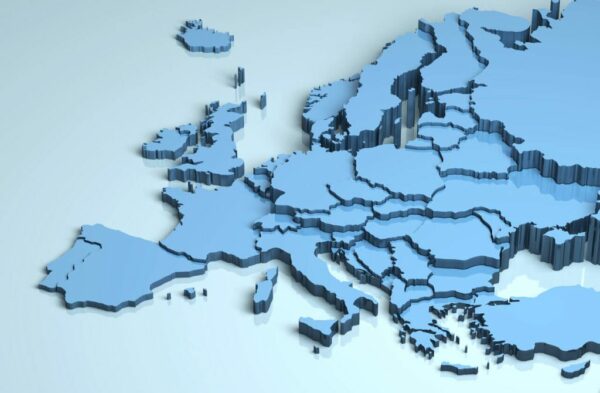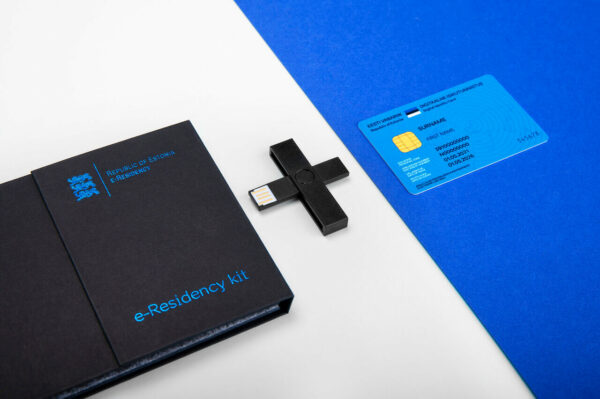
- Video session of Minister Sutt with the new Director-General of ESA, e-resident Josef Aschbacher. Photo: Econmin Estonia
e-Residency
- |
E-resident digital signatures are heading to space!
Hannah Brown, Head of Content @E-Residency in Estonia.
Estonia digitally signs cooperation agreement with the ESA, made possible because its Director-General is an e-resident
Last week was a momentous day for Estonia’s space ambitions as well as for e-Residency. On 12 May, Director-General of the European Space Agency (ESA) Josef Aschbacher met virtually with Estonia’s Minister for Entrepreneurship and Technology Andres Sutt and agreed to increase Estonia’s participation in the European space sector. They also executed a cooperation agreement between Estonia and the ESA, which they signed digitally thanks to Aschbacher’s status as an Estonian e-resident.
E-Residency is a digital identity issued by the Government of Estonia to people outside the country’s borders. One of its main features is to give e-residents the ability to digitally sign, encrypt, and send encrypted documents.
Electronic signing allows for the full digitalisation of business processes, eliminating the time and costs of printing, faxing, mailing, copying, scanning and physical filing, thus giving businesses the freedom to be truly paperless. Plus it mitigates the risk of loss or destruction of signed documents, enhances security of filing processes, and eliminates the need for carrying or storing paper documents.
The electronic signature generated by the e-Residency digital identity card meets the highest standard of EU regulations. Since 1 July 2016, electronic signatures in the EU have been governed by the Electronic Identification and Trust Services (eIDAS) Regulation. eIDAS provides a predictable regulatory environment directly applicable to all EU Member States to enable secure and seamless electronic interactions between businesses, citizens and public authorities. It also ensures legal certainty for cross-border use of e-signatures, e-seals, time-stamps, and the like.
The strongest electronic signature of the three levels set out in the eIDAS is the ‘qualified electronic signature’ (QES). While different levels of electronic signatures may be appropriate in different contexts, only QES are explicitly recognised to have the equivalent legal effect of hand-written signatures all over the EU.
Estonian digital signatures are QES as they meet the technological requirements established in the eIDAS. Firstly, the backgrounds of both the owner of the signature and the issuer of the certificate are checked. Additionally, the signature is given with a means that is deemed suitable and trusted (ID-cards, digital IDs, mobile-IDs and qualified Smart-ID accounts) in Estonia.
But back to the most exciting news … why are e-Residency digital signatures heading to space?
Last week, Estonia’s Minister for Entrepreneurship and Technology Andres Sutt met with the new Director-General of the European Space Agency (ESA), Mr Josef Aschbacher from Austria. At the virtual meeting, the two discussed the new Director General’s priorities for the ESA and how Estonia could increase its contribution.
According to a press release of the Ministry (in Estonian), Estonia is increasingly having a say in space issues and this is good for the local technology industry, especially in the fields of cyber security, innovation and artificial intelligence. Minister Sutt explained that “cooperation with ESA creates excellent opportunities for Estonian companies to find applications for cyber security technologies already used on Earth in the rapidly growing field of space.”
In addition, according to Sutt, Estonia has a clear ambition in organising space traffic. “This is a global challenge that can be solved by secure data exchange, and there are many similarities with the structure of our digital state. Estonia is currently also developing a space law, which would enable the creation of an e-service for space traffic management,” said Sutt.
At the meeting, ESA proposed to establish an ESA Lab in Estonia in cooperation with universities, to contribute to research and development activities in the field of cyber security and machine learning.
Sutt and Aschbacher also digitally signed a new national traineeship program agreement between Estonia and ESA, which gives Estonia the opportunity to send two Estonian trainees a year to ESA in the period 2021–2027.
The agreement was signed digitally as Josef Aschbacher is an e-resident. He was presented his e-Residency kit in early May by Estonian Ambassador Clyde Kull at the Estonian Embassy in Paris, France.

What’s next?
An e-resident in space?!
Well it is a strong possibility if an ESA astronaut becomes an Estonian e-resident.
And if they exchange encrypted documents with Estonia while in space, e-Residency really will go out of this world.
Previously posted at :
RELATED NEWS


